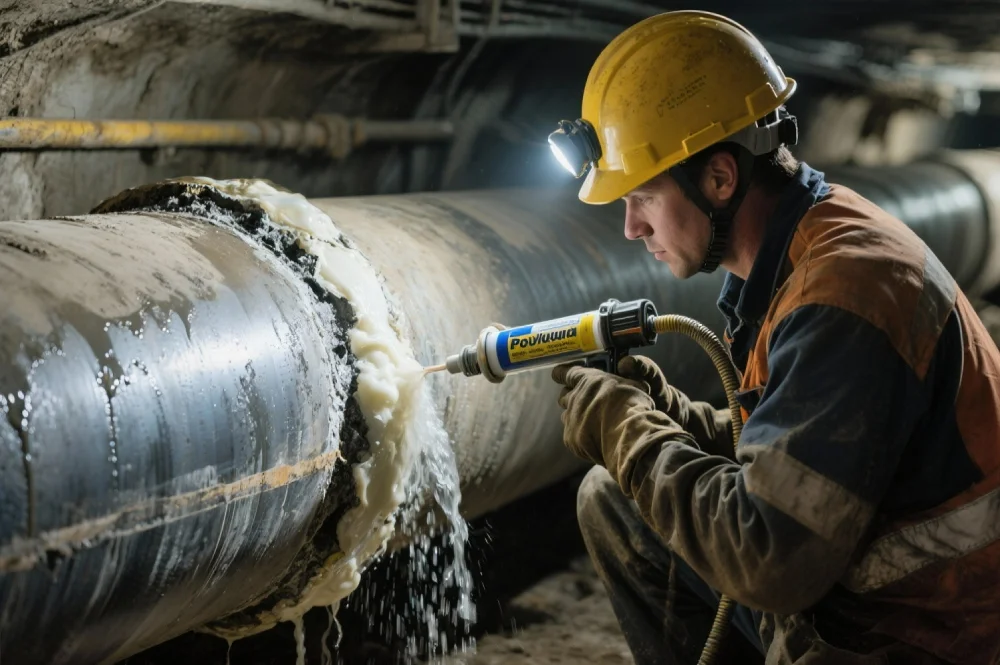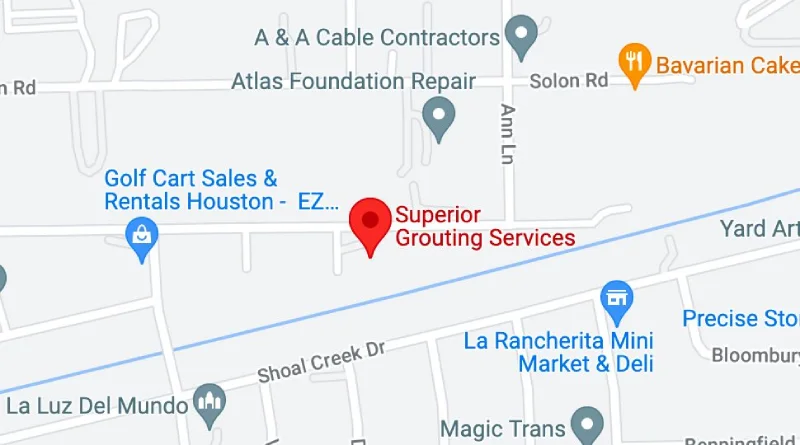Can Polyurethane Grouting Stop Pipeline Leaks for Good?

Polyurethane grouting can stop pipeline leaks effectively and provide long-lasting repairs that many consider permanent when properly applied. The durability depends on installation quality, correct material selection, and ongoing pipeline conditions. Under optimal circumstances, properly executed polyurethane grouting can provide leak-free performance for decades.
The mechanism involves injecting polyurethane grout into leaking areas where it reacts with water, expands, and forms a watertight seal. This expanding foam fills cracks, joints, and voids while providing structural support that halts water movement through damaged pipeline sections.
For Texas infrastructure projects and nationwide applications, professional polyurethane grouting services ensure proper material selection and installation techniques that maximize repair longevity and effectiveness for critical pipeline systems.
Key Takeaways
- Polyurethane grouting can provide permanent pipeline leak repair when properly applied with correct materials and professional installation techniques.
- Repair longevity typically ranges from 10-25 years under normal conditions, with some formulations rated for much longer service life in ideal environments.
- Effectiveness depends on proper surface preparation, correct grout formulation selection, and complete penetration of the repair material into leak areas.
- The expanding foam mechanism fills cracks and voids while providing structural support that prevents future water movement through damaged sections.
- Long-term success requires ongoing pipeline integrity monitoring, as external factors like soil movement may create new damage requiring additional repairs.
- Professional installation and material selection are critical for achieving permanent leak repair results rather than temporary solutions.
How Polyurethane Grouting Stops Pipeline Leaks
Polyurethane grouting works through a chemical reaction process that creates an expanding, waterproof barrier within damaged pipeline sections. Understanding this mechanism helps explain why it can provide permanent leak repair when properly applied.
Chemical Reaction and Expansion Process
When polyurethane grout contacts water, it undergoes a chemical reaction that causes dramatic expansion and foam formation. This reaction allows the material to fill even small cracks and irregular spaces within damaged pipeline areas.
The expansion process creates pressure that forces the grout into all available spaces, ensuring complete coverage of the leak area. According to polymer chemistry research, polyurethane foams can expand to fill volumes many times their original size while maintaining structural integrity.
Expansion Characteristics:
- Initial reaction begins within seconds of water contact
- Complete expansion typically achieved within 15-45 minutes
- Can fill irregular voids and complex crack patterns
- Maintains waterproof properties after full cure
- Provides structural support in addition to sealing
Sealing Mechanism and Water Barrier Formation
The expanded polyurethane creates multiple barriers to water movement through damaged pipeline sections. The cured material forms both physical and chemical bonds with existing pipeline materials.
| Barrier Type | Function | Durability Factor |
| Physical Seal | Blocks water pathways | Maintains shape over time |
| Chemical Bond | Adheres to pipeline materials | Resists separation forces |
| Flexible Barrier | Accommodates minor movement | Prevents crack reopening |
| Structural Support | Reinforces damaged areas | Distributes stress loads |
Penetration and Coverage Patterns
Proper polyurethane grouting achieves complete penetration into all leak-prone areas, creating comprehensive coverage that prevents water bypass around the repair. Professional injection techniques ensure the material reaches all necessary locations.
The injection process uses controlled pressure to drive the grout through the smallest openings while avoiding over-pressurization that could cause additional damage to already compromised pipeline sections.
Factors Affecting Repair Permanence
While polyurethane grouting can provide permanent pipeline leak repair, several factors influence the long-term success and durability of the repair solution.
Installation Quality and Technique
Professional installation is the most critical factor determining whether polyurethane grouting will provide permanent leak repair. Poor installation can result in incomplete coverage or premature failure.
Critical Installation Factors:
- Thorough cleaning and preparation of leak areas
- Proper injection pressure and flow rate control
- Complete penetration verification throughout repair zone
- Adequate cure time before returning pipeline to service
- Quality control testing to verify seal integrity
- Documentation of installation procedures and materials used
Material Selection and Formulation
Different polyurethane formulations offer varying performance characteristics that must match specific pipeline conditions and environmental requirements. The wrong material can compromise repair permanence.
Material Selection Criteria:
- Chemical compatibility with pipeline materials and contents
- Temperature range suitability for operating conditions
- Flexibility requirements for pipeline movement accommodation
- Cure time appropriate for access and operational constraints
- Long-term stability in soil and groundwater conditions
Environmental and Operating Conditions
External factors significantly influence repair longevity and may determine whether polyurethane grouting provides truly permanent leak repair for specific applications.
| Environmental Factor | Impact on Permanence | Mitigation Strategies |
| Soil Movement | Can create new damage | Monitor and address promptly |
| Temperature Cycling | May cause material fatigue | Use flexible formulations |
| Chemical Exposure | Can degrade repair materials | Select resistant formulations |
| Pressure Variations | May stress repair interface | Design for maximum expected loads |
Expected Service Life and Durability
Properly executed polyurethane grouting repairs can achieve service lives that effectively represent permanent solutions for most pipeline applications.
Documented Performance Records
Field performance data shows that well-executed polyurethane grouting repairs regularly achieve decades of leak-free service. Some installations have documented performance exceeding 25 years without failure.
The longest-performing installations benefit from optimal conditions including stable soil, moderate temperatures, and compatible pipeline materials. These examples demonstrate the permanent repair potential of polyurethane grouting.
Performance Documentation:
- 10-15 year performance common for standard installations
- 20-25 year service life achieved under favorable conditions
- Some formulations designed for 50+ year service life
- Extreme cases with theoretical 200-year material stability
- Regular monitoring confirms continued effectiveness
Factors Extending Service Life
Specific conditions and practices can significantly extend the service life of polyurethane grouting repairs, approaching true permanence for pipeline applications.
Life Extension Factors:
- Stable soil conditions without significant movement
- Moderate temperature environments without extreme cycling
- Compatible pipeline materials that form strong bonds
- Professional installation with comprehensive quality control
- Regular monitoring and preventive maintenance programs
- Protection from chemical exposure and contamination
Realistic Longevity Expectations
While polyurethane grouting can provide permanent repair under ideal conditions, realistic expectations should consider site-specific factors and potential future challenges.
For Texas pipeline infrastructure, factors like expansive clay soils and temperature extremes may influence repair longevity, though proper material selection and installation techniques can address these challenges effectively.
Pipeline-Specific Application Considerations
Different pipeline types and operating conditions present unique requirements that influence the permanence potential of polyurethane grouting repairs.
Water and Wastewater Pipelines
Municipal water and wastewater systems represent ideal applications for permanent polyurethane grouting repairs due to relatively stable operating conditions and accessible maintenance protocols.
These systems typically operate at moderate pressures and temperatures while allowing for periodic inspection and maintenance that can extend repair service life indefinitely.
Water Pipeline Advantages:
- Moderate operating pressures favor repair durability
- Water-compatible materials readily available
- Regular inspection programs detect issues early
- Maintenance access typically good for follow-up work
- Long replacement cycles justify permanent repair investment
Industrial Process Pipelines
Industrial pipelines may present more challenging conditions including higher pressures, temperatures, and chemical exposures that can affect repair permanence.
However, the higher value of industrial systems often justifies premium materials and installation techniques that can achieve permanent repair performance despite challenging conditions.
Underground Infrastructure
Buried pipelines face unique challenges from soil conditions, groundwater, and limited access that influence repair permanence and long-term monitoring capabilities.
According to underground infrastructure research, proper material selection and installation techniques can achieve decades of performance even in challenging underground environments.
Professional Installation Requirements
Achieving permanent leak repair with polyurethane grouting requires professional expertise in material selection, installation techniques, and quality control procedures.
Surface Preparation and Access
Thorough preparation of leak areas is essential for achieving the material adhesion and penetration necessary for permanent repairs.
Preparation Requirements:
- Complete removal of loose debris and contamination
- Cleaning of surface materials to promote adhesion
- Access hole placement for complete coverage
- Pressure testing to verify leak location and extent
- Environmental protection during installation process
Injection Procedures and Equipment
Professional-grade injection equipment and techniques ensure proper material placement and complete coverage of all leak-prone areas.
| Equipment Type | Application | Quality Benefit |
| High-Pressure Pumps | Deep penetration | Reaches all leak areas |
| Flow Control Systems | Precise material placement | Prevents waste and over-injection |
| Monitoring Equipment | Real-time feedback | Verifies complete coverage |
| Safety Systems | Personnel protection | Ensures safe installation |
Quality Control and Verification
Professional installation includes comprehensive quality control measures that verify repair effectiveness and predict long-term performance.
Quality Assurance Protocols:
- Pre-injection condition assessment and documentation
- Real-time monitoring during material placement
- Post-cure pressure testing to verify seal integrity
- Long-term performance monitoring and evaluation
- Warranty programs backing repair permanence claims
Limitations and Realistic Expectations
While polyurethane grouting can provide permanent pipeline leak repair, understanding limitations helps set realistic expectations and ensure appropriate application selection.
Conditions Limiting Permanence
Certain pipeline conditions may prevent polyurethane grouting from achieving truly permanent repair, requiring alternative approaches or additional measures.
Limiting Factors:
- Severe structural damage requiring pipeline replacement
- Active ground movement causing ongoing damage
- Chemical exposure incompatible with available materials
- Access limitations preventing proper installation
- Operating conditions exceeding material capabilities
Maintenance and Monitoring Needs
Even permanent repairs benefit from periodic monitoring and maintenance to ensure continued effectiveness and detect any new damage requiring attention.
Monitoring Requirements:
- Regular visual inspection of accessible areas
- Pressure testing to verify continued seal integrity
- Environmental monitoring for changes affecting performance
- Preventive maintenance addressing potential issues
- Emergency response plans for unexpected failures
Alternative Solutions for Complex Cases
Some pipeline conditions may require alternative repair approaches or combination techniques to achieve permanent leak repair.
Professional grouting services can evaluate complex situations and recommend the most effective approach for achieving long-term leak repair success.
Cost-Effectiveness of Permanent Repair
Polyurethane grouting represents a cost-effective approach to permanent pipeline leak repair when compared to alternatives like pipeline replacement or repeated temporary repairs.
Initial Investment vs. Long-Term Value
The upfront cost of professional polyurethane grouting is typically much lower than pipeline replacement while providing comparable long-term performance for leak repair applications.
Cost Comparison Factors:
- Material costs versus replacement pipeline costs
- Installation labor versus excavation and replacement work
- Service disruption time and associated costs
- Long-term maintenance and monitoring expenses
- Risk mitigation and liability considerations
Return on Investment Analysis
Professional contractors can provide return on investment analysis comparing polyurethane grouting with alternative repair approaches based on expected performance and total lifecycle costs.
For critical Texas infrastructure applications, permanent repair solutions often provide superior value through avoided downtime, reduced maintenance costs, and extended service life.
Budget Planning Considerations
Understanding the factors that influence repair permanence helps with budget planning and realistic expectations for long-term pipeline maintenance programs.
Budget Factors:
- Initial repair cost based on extent and complexity
- Expected service life and replacement timeline
- Monitoring and maintenance program costs
- Risk management and contingency planning
- Regulatory compliance and documentation requirements
Conclusion
Polyurethane grouting can stop pipeline leaks for good when properly applied with correct materials and professional installation techniques. Service life typically ranges from 10-25 years under normal conditions, with some installations achieving decades of leak-free performance that effectively represents permanent repair.
Success depends on proper surface preparation, correct material selection, complete penetration, and ongoing monitoring to address any new damage that may develop. Professional installation and quality control are essential for achieving permanent repair results rather than temporary solutions.
Superior Grouting provides expert consultation and professional installation services for permanent pipeline leak repair using advanced polyurethane grouting techniques. Our experienced team ensures proper material selection and application procedures for maximum repair longevity and effectiveness. For professional evaluation of your pipeline leak repair needs, contact our team.

